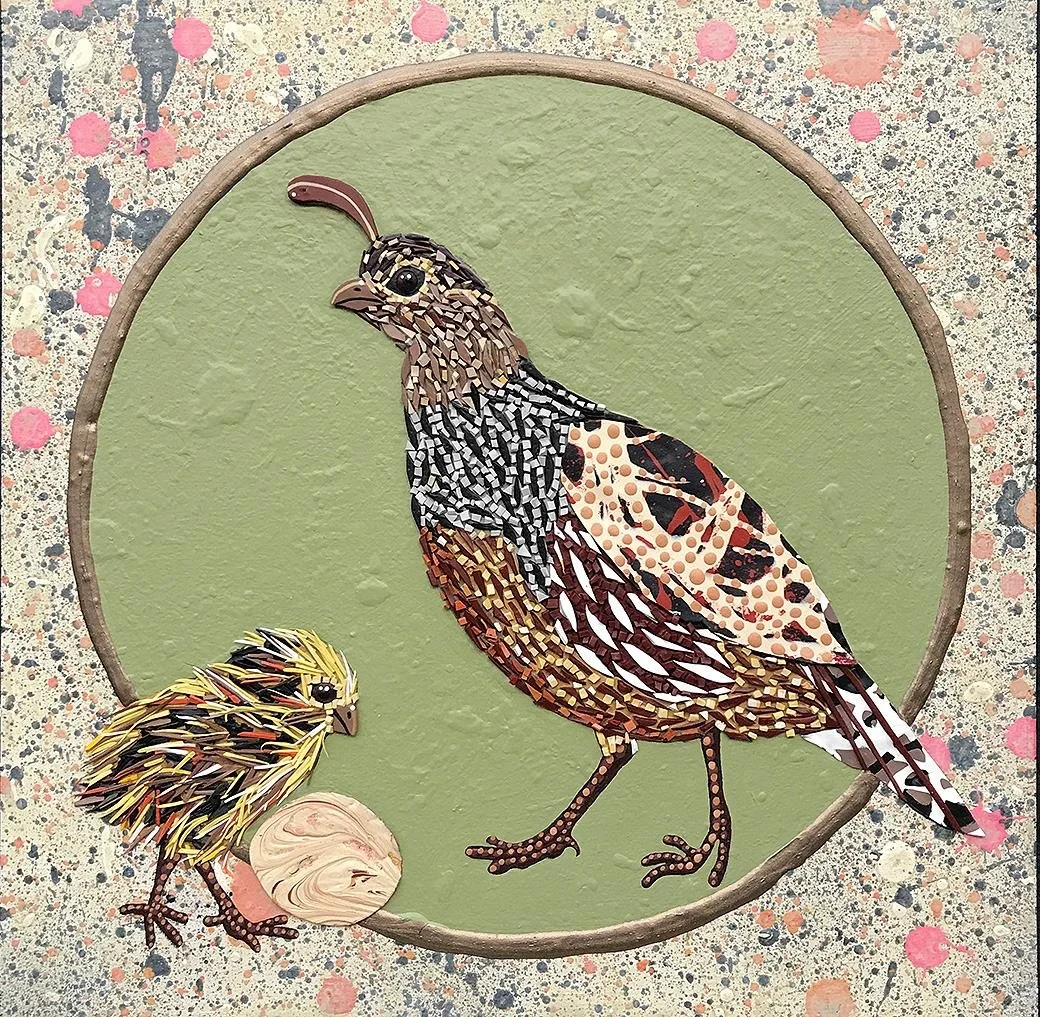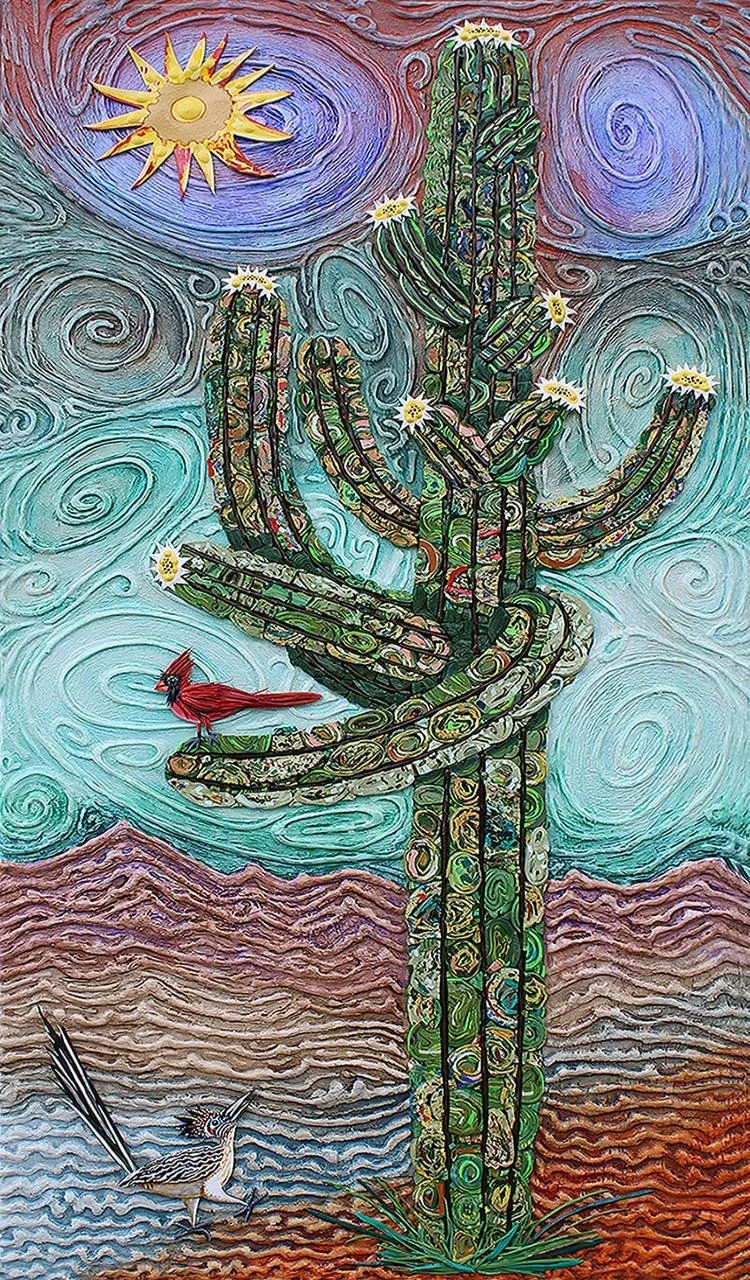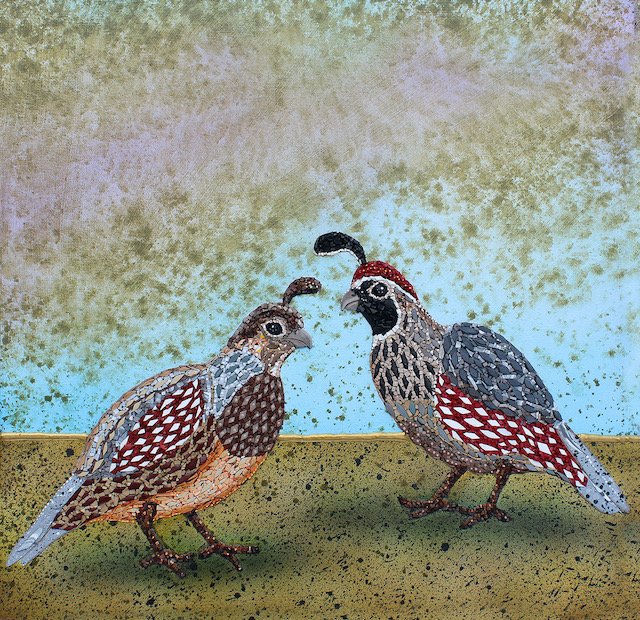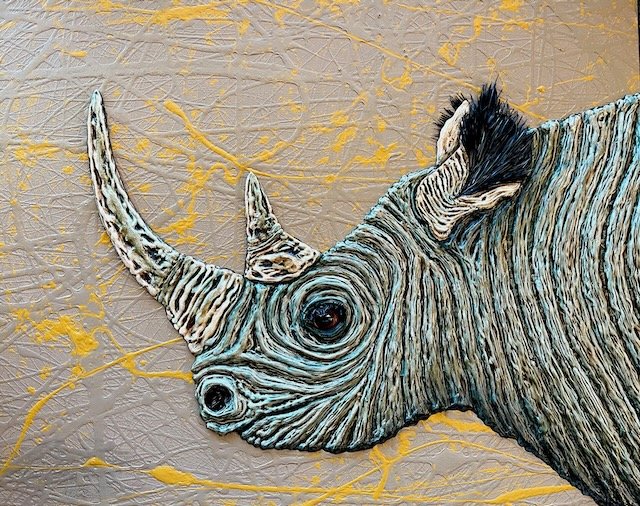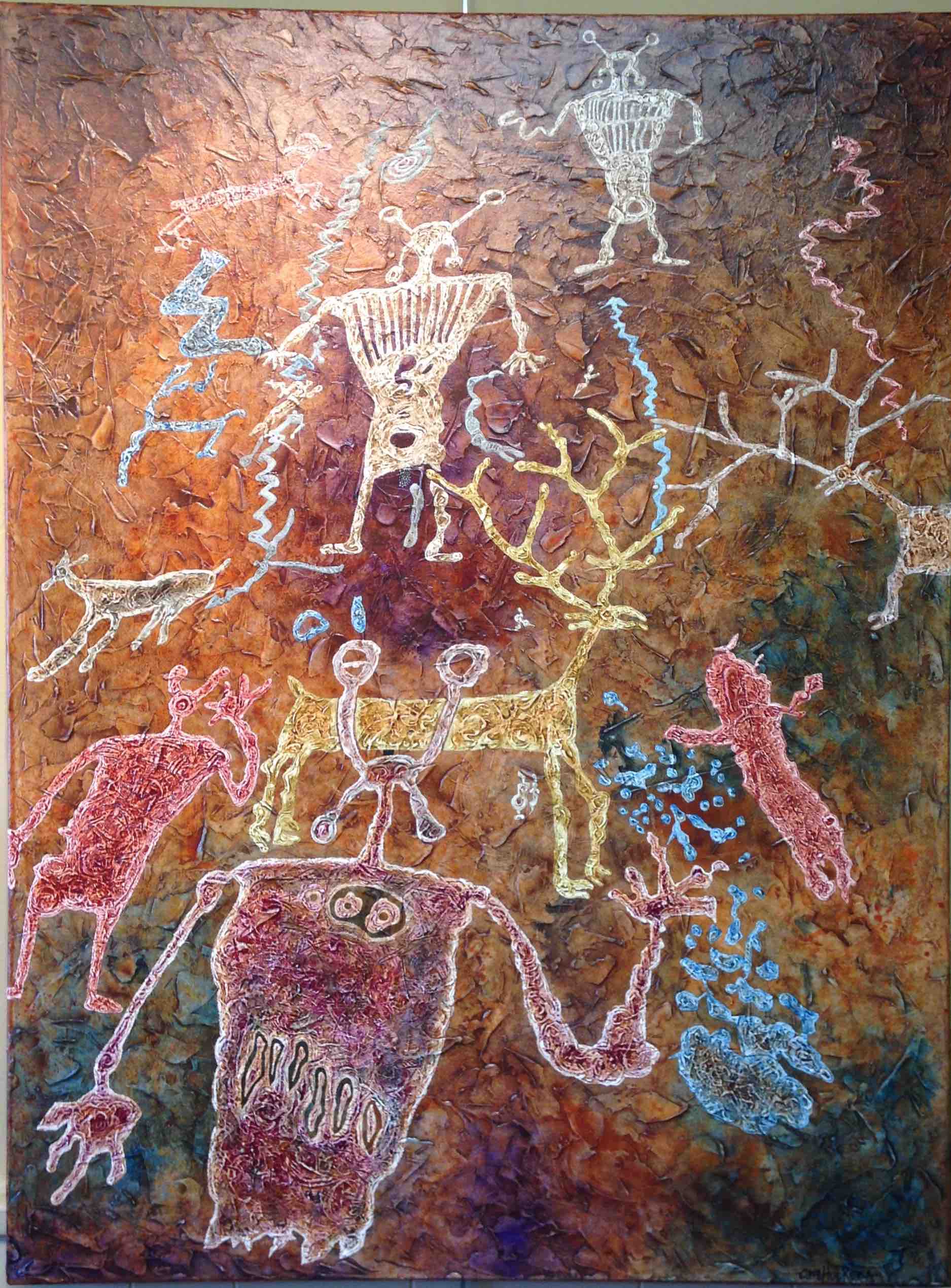Click on images for full view. Artist Bio follows image gallery.
Charles Huckeba is a contemporary painter with a fine arts degree and graduate study from the University of California at Santa Barbara, where he studied under an outstanding faculty of contemporary artists such as Larry Rivers and Irma Cavat. His influences are varied, including Paul Klee, Jean Dubuffet, Adolf Gotlieb, Cy Twombly, Wassily Kandinski and Joan Miro. Charles and his wife, Jill, have spent years exploring and recording the rich lode of prehistoric pictographs and petroglyphs found in the Western United States Great Basin.
In 1993, Huckeba began combining and integrating various painting techniques developed from his academic foundation to render rock art designs he had seen into a contemporary presentation. The results are works held in corporate collections of The University of Northern Arizona, The University of California at Santa Barbara Art Museum, The CEU Prehistoric Museum, and The Museum of the San Rafael. His abstract contemporary art is also shown in several fine art galleries in Arizona. Huckeba’s paintings are held by numerous private collectors throughout the United States, England and France, including actress Lilly Tomlin and archaeologist and writer, David S. Whitley, Ph.D.
Huckeba states, “Rock art is the first American abstract art. What brings a petroglyph to life is the stone beneath the patina (a varnish created by the desert heat and elements over thousands of years.) As the surface patina of the rock is removed, the interior is exposed. This is how we see the prehistoric artist’s mark. My paint application is multi-layered and textural. The image elements are scratched, etched and scoured under and over the stratas of pigment much as the numerous superimpositions found in petroglyphs. My goal is to build a link between contemporary and prehistoric art.
CHROMA TEXTURES
The creation and process of the technique
Over the course of my painting career there has been a significant accumulation of dry pieces of acrylic paint that are generally thrown away with the empty paint container. The saved cache of pigment pieces became pounds and pounds over time. Sometimes the simplest most accidental idea can be the best and most creative. To adhere the dry pieces of paint I laid down a thick wet layer of black paint. The application of the dry paint pieces into the wet paint had to be completed in a timed manner, otherwise the wet paint would dry too quickly and the dry pieces would not bond properly. By now I spend hours creating those dry pieces of paint for the express use of Chroma Textures paintings.
The new painting idea needed a name in the context of art media. I called it Chroma Textures because the dried pigment colors are varied, thick and chunky. Irregular in size, form and thickness, they have a depth and projection from the surface of the canvas. The wet base paint color may vary with the subject rendered. The random disposition of colors and forms of the dry paint pieces makes for an abstract chaotic approach to painting, The subject may be an animal but the dry paint piece application is totally abstract. The bristling texture and color seem to fall off and away from the canvas into the face of the viewer.
Chroma Textures Works




